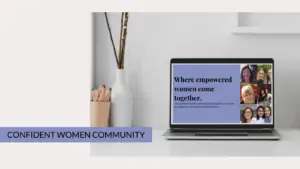#236: Future Continuous and Future Perfect Forms | Advanced English Grammar

There are some future situations that can only be talked about by using advanced-level grammar structures such as the Future Continuous, Future Perfect, and Future Perfect Continuous.
That may seem complicated but not after today.
In this lesson, I’m going step-by-step through all 3 of these future forms with real-life examples so that in your English conversations you can easily
- Make forecasts or project assumptions
- Describe future events you strongly believe will occur
- Indicate that future events/situations/actions will be temporary
- Make Promises
And more.
If you’ve been following me for a while, then you know I have a lesson on 4 Different Ways to Talk about the Future and another on How to Talk about Future Hopes in English.
One of the most common questions I get on those two lessons are:
Annemarie, can you talk about more complex future forms, like the future continuous or the future perfect?
Today I’m going to do just that.
LISTEN TO THE PODCAST
The Future Continuous and The Future Perfect Forms in English
Structure of Future Continuous and Future Perfect
Future Continuous
The future continuous is formed with the following grammatical structure:
Subject + will be + verb[ing]
- I’ll be presenting on Friday so I can’t make our usual Friday lunch date.
- She’ll be going…
- They’ll be driving…
Future Perfect
Next, the future perfect follows a similar structure to other perfect tenses and incorporates the verb ‘to have’:
Subject + will have + past participle
- By this time next week, our team will have completed the project.
- By the end of the day, John will have driven more than 350 miles.
- You’ll have been a member of our community for a whole month next week!
Future Perfect Continuous
Lastly, just like the future perfect, the future perfect continuous is also formed with the verb ‘have’. However, the structure is similar to the future continuous as well:
Subject + will have been + verb[ing]
- By the time I’m finished, I’ll have been working for more than 12 hours so I’m not sure I’ll want to go out to dinner. I’d rather just relax at home.
When to Use the Future Continuous
We use the future continuous tense to:
- Project assumptions
- Describe events that you are pretty certain will occur
- Emphasize that something may still occur
- Describe new or temporary events
Projecting Assumptions
When you assume or suppose that something will happen in the future, the future continuous tense is a great way to express this thought.
For instance, after inviting a friend out to dinner, it started dawning on you that they may be too exhausted to join after a long week of meetings.
In that moment, you might say, “I suppose you’ll be feeling too exhausted for a night out on Friday.”
Using the future continuous tense allows us to verbally share our assumptions.
Describing Events You Strongly Believe Will Occur
When there’s enough to make you believe that something will absolutely occur in the future, you can communicate that certainty with the future continuous tense.
Imagine you’re waiting for your colleagues to arrive at a conference and you suddenly receive a text from one of your coworkers to let you know that they are running late.
Since you’re certain now that they will be late, you might inform the others by saying “They’ll be arriving at 4:00 PM; Ella just texted to let us know that they are stuck in traffic.”
Emphasize Continued Occurrence
Sometimes, with good reason, you may need to emphasize or stress that an event could continue to occur well into the future.
Perhaps, you get into a passionate discussion about the effects of climate change. In an effort to bring attention to the fact that temperatures will continue to rise, you say:
“We need to face the fact that despite our efforts to slow global warming, temperatures will still be rising. We need a more sustainable plan.”
By using ‘still’ AND the future continuous tense, we can emphasize the continued occurrence of an event, despite current circumstances.
Describing Temporary Events
When we want to express the impermanence of an event or action, we can use the future continuous tense to do so.
Imagine your employer has opted to halt the use of one video conferencing platform and explore another. During the transition, you might only have access to email responses.
When informing your team, you may say “we’ll be responding to clients via email this week, but we’ll go back to video conferences once our new conference platform becomes available.”
When to Use the Future Perfect
Unlike the future continuous tense, the future perfect tense refers to two future points.
We use the future perfect to express that a future action or event will occur by the time another future event or action occurs.
As such, you may notice that the future perfect tense is often accompanied with ‘by’ or a time phrase.
Here are some phrases that are often used to specify a future point in time:
- By this time tomorrow/next week/next month/next year
- By tomorrow/Friday/3:00 PM
- In a year/week/month
- In # weeks/months/years time
- When [X occurs]…
So, we use the future perfect tense to describe or state:
- The period of time between two future actions/events
- Actions will be finished before a certain point in time
- Expectations
- Future hopes
- Make a promise or commitment
Describe Lengths of Time
To emphasize the period of time it will take to reach point B from point A, we can use the future perfect tense.
Imagine your partner is worried that the renovations won’t be done by the time the new furniture is delivered.
To reassure your partner, you might say “They will have worked for days on the renovation when the furniture gets delivered. I’m sure they would be done by then.”
By using the future perfect tense with ‘for’ we can emphasize draw the listener’s attention towards the length of time.
Confirm the Completion of An Action/Event Before Another
When you want to confirm that a future action or event will be completed prior to a specific action or event in the future, the future perfect tense can convey this thought along with the feeling of certainty.
For example, at the end of a meeting your boss recaps the information and decisions discussed in the past hour. When speaking about a product launch, she may confirm the plan by saying “In two weeks time, we’ll have received the marketing drafts for the upcoming product launch.”
That being said, we can also use the future perfect to confirm that something won’t occur
Imagine you’ve invited a friend over for dinner and they text you to say that they might arrive earlier than expected. In that moment, you might panic and think to yourself “When they arrive, I won’t have finished cooking!”
Share Expectations
When we set expectations and share them with others, the future perfect tense allows us to set those expectations in the future.
Imagine you’re a teacher or parent who sees potential in a studious child and expect them to do well in the future.
You might express to someone that, “By this time next year, she will have gotten offers from the best universities.”
Using the future perfect tense to express an expectation allows you to clearly communicate a set expectation for the future.
Express Future Hopes or Dreams
Since hopes are a form of expectations, we can use the future perfect tense to express them as well.
Perhaps you find your investments finally bringing in profits and you feel that you’re on track towards an early retirement. You might share your hopes with your loved one by saying, “It’s my dream that I will have retired by the time I turn 40.”
For more ways to express hopes and dreams, please visit How to Talk about Future Hopes in English.
Make A Promise/Commitment
We can consider a promise to be both an expectation and confirmation of a future event. When we make a promise, we commit with certainty. All these elements are accurately expressed when we use the future perfect tense to state a promise.
For instance, if you’re working towards a deadline and you want to reassure or promise to a team member that a draft will be completed soon, you might say “ By 4:30 PM, I will have completed the final edit.”
By using the future perfect tense, you indirectly set an expectation of yourself and commit to the completion of an action by a future point in time.
When to Use the Future Perfect Continuous
We use the future perfect continuous tense to:
- Describe the duration of an occurrence by the time another action/event occurs
- Express the continuation of an action/event even after a future event/action
- Describe a cause and effect
- Predict a habit or common occurrence
Describe Durations of Ongoing Actions Until a Future Event/Action
When English speakers want to draw attention to the length of time an action may be occurring up until another future action/event, they use the future perfect continuous tense.
Imagine you’re speaking with a client and you want to emphasize that you will be prioritizing their project up until the very day of an important meeting. To express this, you might say, “I can assure you that everything will be in order. We will have been working on this project for days and hours to ensure that it’s successfully presented by the time the meeting ends.”
Express the Continuation of an Action/Event
While we can use the future perfect continuous tense to emphasize that something will continue to occur, much like when we use ‘still’ with the future continuous tense, we can also use it to imply that an action is ongoing even after we reach a future action/event.
Perhaps you’re a manager who wants to touch base with your teammates, you might tell them, “On Monday, you will have been working on the proposal for two weeks. Please remember to send me an update on Tuesday, so I know how things are going.”
Describe Future Cause & Effect
The future perfect continuous tense allows us to foreshadow that a resulting action/event could arise if another action/event is completed beforehand.
For example, you foresee that you’ll feel too tired to go on a jog because of how long you might be training beforehand. You might turn down your friend’s offer by saying, “When you arrive, I will have been training for a few hours, so I’ll probably feel a little too tired for a jog.”
Predict A Habit Or Common Occurrence
When we set a goal or expect that a habit will exist or that an action/event will become a common occurrence, we can use the future perfect continuous tense to express this.
Imagine your sister is excited for her trip to Paris. To prepare, she has decided to learn French and exclaims, “I will have been practicing French every day by the time we get to Paris.”
Practice the Future Forms
Let’s do a bit of practice.
I want you to think about your English goals. What are you working on right now?
- Preparing for a job interview in English?
- Getting to know your neighbors or coworkers with small talk?
- Overall English speaking confidence?
Whatever your goal, I want you to share a future expectation.
Imagine your life in 6 months. What will you have accomplished by then?
Try finishing this sentence:
In 6 months, I will have ___________.
Tip: Be sure to use the Future Perfect here. You can share your answer with me in the comments below.
~ Annemarie
P.S. Are you looking for a community to provide support, help you stay motivated, and guarantee that you grow? Check out our Confident Women Community.
Get the Confidence to Say What You Want in English
Follow my 3-step solution to speak English with clarity, fluency, and freedom so you can say what you want with confidence.
You'll also get my Confident English lessons delivered by email every Wednesday and occasional information about available courses. You can unsubscribe any time.
More Like This
How to Ask for and Understand Directions in English
Struggle to ask for directions in English? In this lesson, you’ll learn simple, polite English travel phrases and survival English to ask for help naturally and confidently—even if you’re shy. Get practical English conversation tips, discover what native speakers really say, and build your English communication confidence for your next trip or everyday conversation.
Learn English Phrasal Verbs Faster — 5 Minute Routine
Tired of forgetting English phrasal verbs the moment you need them? In this Confident English lesson, you’ll learn a 5-minute daily routine to make phrasal verbs stick—so you can remember them, use them naturally in real conversations, and finally stop second-guessing. Whether you need phrasal verbs for work, everyday conversations, or English speaking practice, this lesson gives you practical steps that fit your real life.
Sound Fluent & Professional: English Phrases for Meetings & Updates
Want to speak English more naturally at work? In this lesson, you’ll learn powerful English phrases for meetings and updates, including business phrasal verbs professionals use every day. Get the vocabulary and expressions you need to give confident project updates, explain delays clearly, and wrap up your message like a pro.
How to Give a Project Update in English at Work
Give a clear project update in English with a concise 3‑step framework. Get the phrases and structure to deliver professional project status reports confidently at work.
Professional Ways to Ask for Help in English (4-Step Formula)
Learn how to ask for help in English at work—without sounding unsure or unprepared. This 4-step formula gives you clear, professional phrases for meetings, emails, and team collaboration.
30+ English Phrases to Compliment Food Naturally and Politely
Learn 30+ natural English phrases for food and how to compliment food in English politely and sincerely. Perfect for dinner parties, eating out, and everyday English conversations.
© Copyright 2014-2025 Speak Confident English | Privacy Policy | Terms & Disclaimer | Online Class Policies







It’s not advanced, some parts are from B1-B2 and nothing has been said about past assumotions with will + have + V3nd.
A tricky lesson!!!
However i am going to practice in improving this form to talk about the future in order to sound more accurately.
Thank you for the high level lessson.
I encourage all of you…..we can 😉
Thank you for your encouraging comment, Beatriz! We’re glad the lesson was useful, and we wish you much success in practicing the future tense forms.